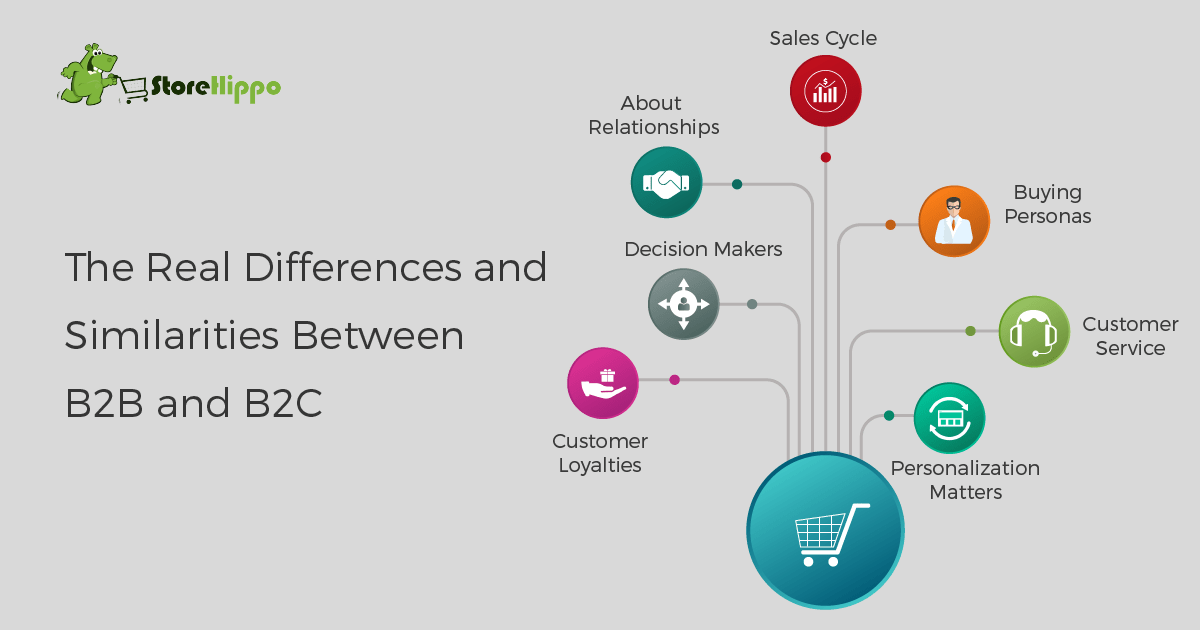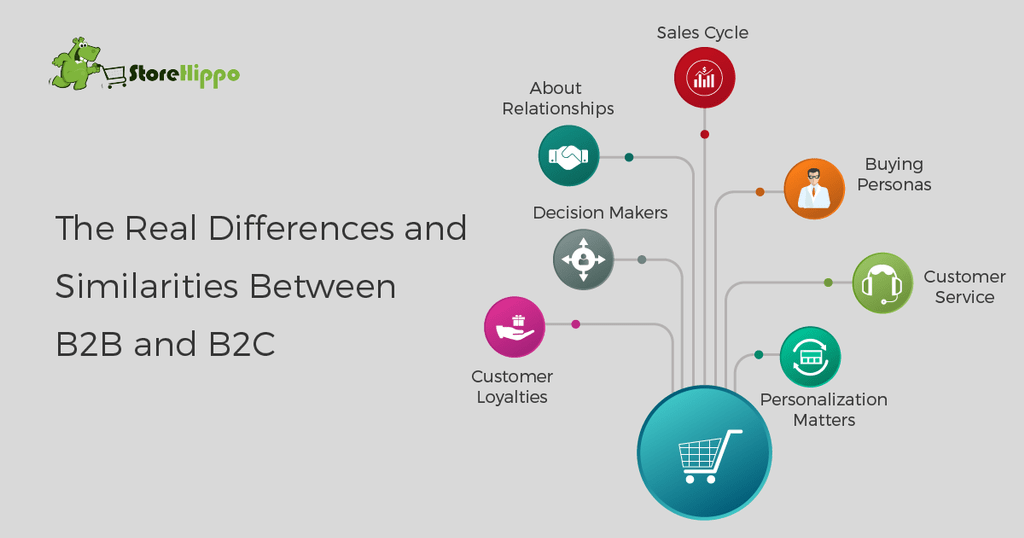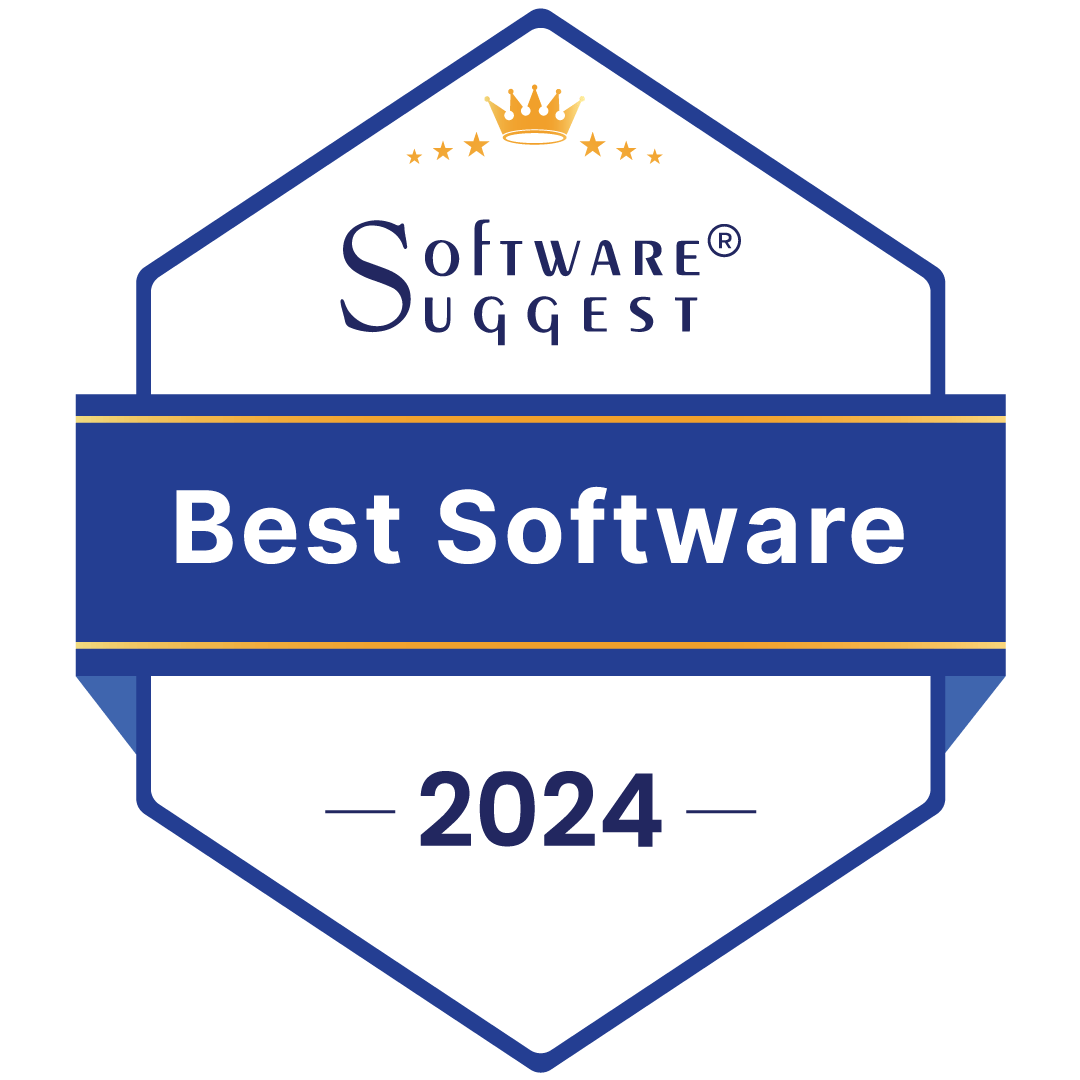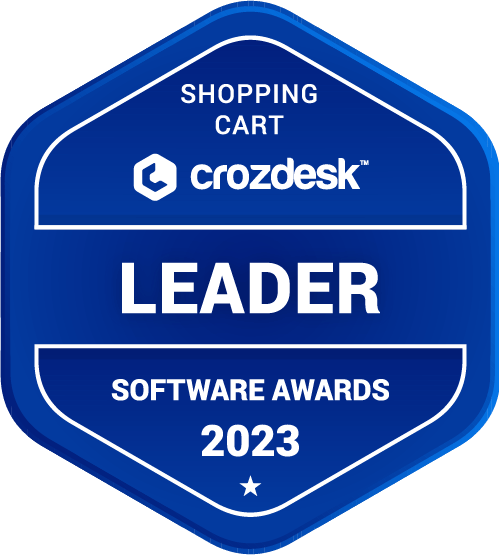If you are a business owner, there could only be two kinds of customers you could be catering to; either individual customers or other businesses.
So which one are you?
If it is the former, then your target audience is the mainstream consumer i.e. you own a retail business, but if yours is the latter, then you have a wholesale business.
Simple, isn’t it?
Well, actually no.
At surface level, the difference between the two seems merely in terms of scale but as we venture further, we realize that both these consumer-based and business to business campaigns go far beyond than the number of customers they serve.
It even includes who they sell their products to, what are the expectations of these customers and the level of service they expect. And this is just the start.
So, how do both these industries differ and what common ground they hold together? Let’s begin by understanding each of these separate approaches.
Table of Contents
What is a B2C business?
It is a business to consumer company that is used to describe a commerce transaction between a business and an end consumer. Traditionally speaking, it is the process of selling products and services directly to consumers. Retail chains, restaurants, housekeeping services are all examples of retail businesses. And we are thankful to these, today we can buy anything we want in a matter of minutes.
What is a B2B business?
It is a Business to Business setup where the products and services are sold to other businesses rather than individual buyers. In other words, whenever a business needs to source raw materials for its production or it needs any operational assistance, it transacts with a B2B business. A fine example would be a cornflake selling company that buys the cornflake making machinery from another company.
So, how do B2B and B2C processes differ?
1. Lead Pool Size
One of the major differentiators between the two is the size of the lead pool. With Business to Consumer, you target millions of people at any given time who need your product.
Let’s suppose your company sells cornflakes. Now, if you wish to zoom in on your target audience, all you need to do is count the number of people who have breakfast. Want to double in on your sales? Design a campaign that sells cornflakes as snack and dinner alternatives. Congrats! You have just doubled your lead pool size.
For wholesale, the lead pool size is comparatively much smaller which is generally defined by the companies’ specific requirements.
Let’s take our previous example once again. Only this time, you would be selling cornflake making machines. Now once you venture into Business to Business, your lead pool size ultimately shrinks to a handful of cornflake selling companies such as Nestle, Kellogg’s etc. Though you do make a lot of profit from these handfuls of companies.
2. Required Product Knowledge
We all agree that in order to sell a product, one must know the product like the back of their hand, be it Business to Business or B2C. This includes not only their design details and features but also the various advantages and disadvantages.
The difference, however, lies in the depth of knowledge required. This information varies for both Business to Business and Business to Consumer buyers. An individual consumer who is buying those cornflakes might want to know the taste and price of the product, along with its calorie and sugar count. Once satisfied with the info, he can easily make his next choices easily.
When you compare this with B2B, you will realize that the buyer needs a completely different type of info. They will be more interested in the specifications and technical details of the product along with how all this would fit into their company’s system (hardware, software and human-powered).
3. Number of Decision Makers
In a typical retail buying scenario, there is usually only one decision-maker for you to deal with. Getting back to our cornflake example, we only need to consider the taste, budget and health preferences of that individual consumer. Sometimes, the other members of the family might have a say in his decision, but that is not always.
It’s different with wholesale clients. Here, decision making is a lengthy process that involves multiple stakeholders within an organization and not an individual. Plus, it’s a complicated decision to make since it affects a much broader group. This is because of the longer sales cycle and deeper marketing funnel.
4. Emotional Aspect
Both customers show a completely different response to respected sales strategies. In retail, you always strive for an emotional response from your customers. Sure, you are happy to offer some facts to promote this behaviour.
For example, you might want to tell your B2C prospects that breakfast is the most important meal of the day and the cornflakes you sell are packed with good fibre sources. All these facts will eventually help you gain customer loyalty. Your end goal, in this case, is always to make your customers love and prefer your product despite the fact that there are better options available for them.
In the case of Business to Business customers, things are a bit different. Here, the cornflakes making machines that we sell, are usually at the top end of the price scale. These are considered as investments by your B2B buyers who need thorough consideration, esp. When it comes to the expected costs and their returns.
Plus, he would also show interest in the machine’s make, upkeep, its production output, manpower engagement, etc. This is something a retail consumer would never consider.
We know better than to leave these to our emotions. That’s why Business to Business purchasing decisions are always approached with rationality, leaving little room for emotions.
5. Sales Cycle
The sales cycle of retail purchase is pretty quick, and in many cases, almost impulsive. Here people buy either in-the-moment or out of habit. The advertisements, word-of-mouth publicity, and their own habits or cravings play a huge role in influencing their decisions. Product awareness and presence are of utmost importance to sell to this kind of audience.
It’s different with wholesale, as much of the time is spent wooing the customer. And not just one, since there are several people involved in making the decision so you need to convince each one of them. This process of wooing requires you to go through a lot of phone calls, meetings, demos etc. which might take months (even years).
6. Customer Loyalties
Business to Consumer relationships is something that is always looked upon as one-off transactions. The primary focus is right there at the point of purchase. But these preferences and loyalties can easily change as well.
That is why our B2C consumer who is happy today buying our cornflakes might decide to try out some other brand next week. Or even switch to eggs and toast for breakfast from now on.
With Business to Business, the whole purchasing process is more of an investment for both buyer and seller. Here, you spend months of your time and effort tending to the needs of the prospect, nurturing the lead by providing the necessary information. Not to mention the follow-ups, meetings and presentations to all stakeholders during this period.
Your B2B buyers too, put in equal time and effort finding the best solution for their needs. You know why? Because they too are not just looking for a one-off transaction but a reliable business partner to work with.
What makes the B2B and B2C processes similar to one another?
Now that we have familiarized ourselves with top differences between the two processes, let us have a look at similarities. You will find here some very fundamental points that apply for both the above-mentioned categories.
1. It’s all about Relationships
Yes, it’s always good to be friendly regardless of who your buyer is. And yes, we agree that wholesale transactions might involve somewhat more content consumption, conversations and meetings than a typical retail transaction.
But when you think of consumer-based subscription services such as Netflix or your cell phone service, you won’t feel much difference. Though strictly of retail nature, they require a long-term commitment from the buyer in order to work. So you see, forming a lasting relationship is essential regardless of which industry you serve.
2. Personalization Matters
There’s no denying that personalization holds a special place in both the industries. No wonder, the majority of consumers, whether one or another, prefer brands that recognize them by name. Studies, again and again, have revealed that business buyers (just like their B2C counterparts) respond well to personalized marketing.
3. Outstanding Customer Service
Customer service is another similarity both processes share in common. Both of these industries offer a superb customer service experience to their customers, be it individual consumers or organizations. This customer support is the key to retention and reduced churn.
Both Business to Business and Business to Consumers processes give their customers the support they need, not only pre-sale but post-sale as well along with timely tips. The key takeaway here is the same for both, love your customer and they love you back.
4. Process Matters
Processes have mattered a lot while creating a repeatable path to success. And even though the process a B2B marketer undertakes may be longer and different than that of a retail marketer, but nevertheless, it’s the process that matters, a well-defined process that is part of a successful marketing plan (for both Business to Business and Business to Consumer) from ideation to tactics to strategy.
5. Buying Personas
Another similarity is the buying persona that is common to both. Where retail companies identify and create buying personas through a fictional representation of the individual human customer, wholesale companies do so by creating ideal customer profiles through a fictional representation of the company that is the best fit for their products or services.
Bottom Line
We already know that business isn’t personal, so it’s only natural that there will be differences in both approaches. Someone purchasing a brand new Air Conditioner for their bedroom isn’t going to think the same way as they would when they are looking for resources for their business.
So, when you understand the difference between business to consumer and Business to Business, it will only make your campaigns more successful and in turn, help get you better results in the end.
But wait! There are a lot of similarities between the two as well. Knowing them is critical as well. Think of it like this, in retail you are selling to consumers and in the other, you are selling to businesses. But in both cases, you are still selling to humans no matter what.
So, whether its differences or similarities, the bottom line always its to understand your audience and what they need. StoreHippo is a fine example of an ecommerce platform that serves both b2b and b2c industries. It is a robust ecommerce solution that single-handedly deals with all the differences they present meanwhile catering to all the similarities they possess.
But you don’t have to take our word for it. Visit our website, book a demo and find out for yourself!























Leave A Comment